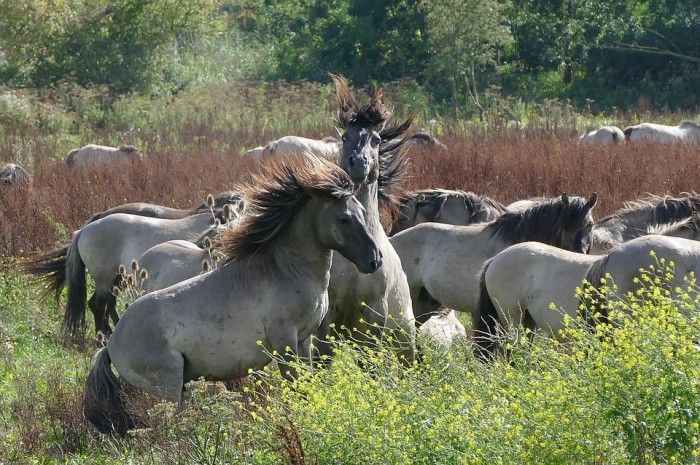
Foraging behaviour and diet selection of Koniks and donkeys.
A long time it was common to use livestock to graze on the Belgium coast natural vegetation. However, the landscape has changed due to human intervering and as a result the vegetation gets more or less monotonous. To explore if large herbivores can play a role in the preservation of the semi-natural dune areas, they conducted a studie. An earlier study showed that horses and donkeys are considered to be the best species to reach this goal.
More knowledge about the foraging behavior and diet selection of these herbivores was necessary to be able to predict the possible long-term effect on the area. So a small herd of 6 donkeys and 4 koniks were released to year round grazing. The researchers kept detailed track on the type of vegetation intake as well as the condition of the plants. Also movement, defecating,moving, standing inactive, lying and social interactions were noted. The report shows specifically which plants were eaten and how much of it.
Bite rate (bites/min. grazing) of Koniks is significantly higher than that of donkeys in all seasons. They both change bite rate per season. Koniks eat faster in the summer, however donkeys show the opposit. They eat faster in wintertime. The koniks spend more time grazing (73% of there time) than the donkeys (52%). They both mainly eat grasses and grass-like species. The koniks eats 86% grasses and the rest is mainly herbs. The donkeys eats 79% graminoid species and adds the rest with herbs.
The conclusion of this studie is that both animals feed mainly on vegetation that needs to decline in dominance (Calamagrostis epigejos). But they are not able to browse enaugh trough scrub species tot decrease the area occupied by shrubs.
> From: Eric Cosyns1 et al., Belg. J. Zool. 131 (2001) 111-118. All rights reserved to Belg. J. Zool.. Click here for the online summary.


